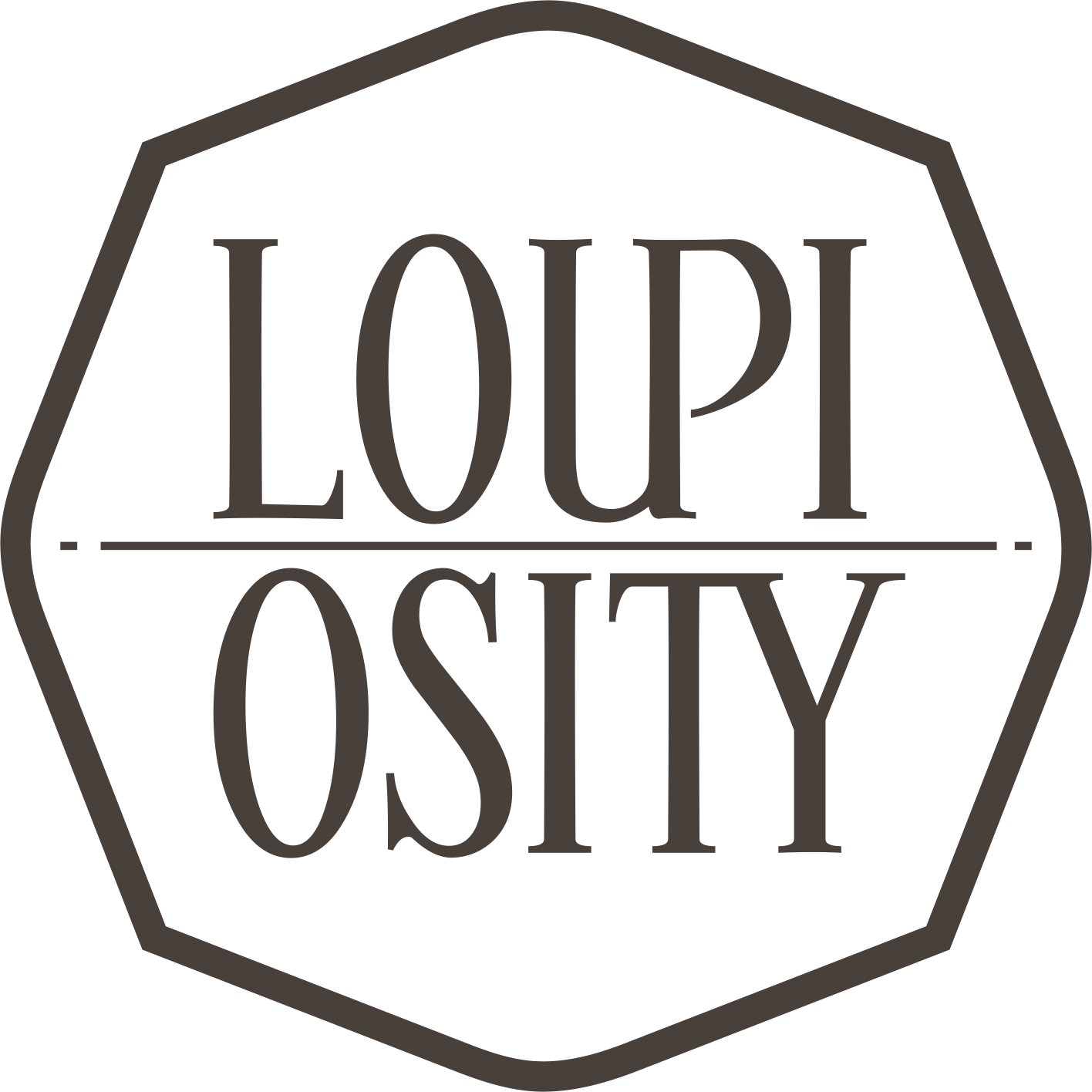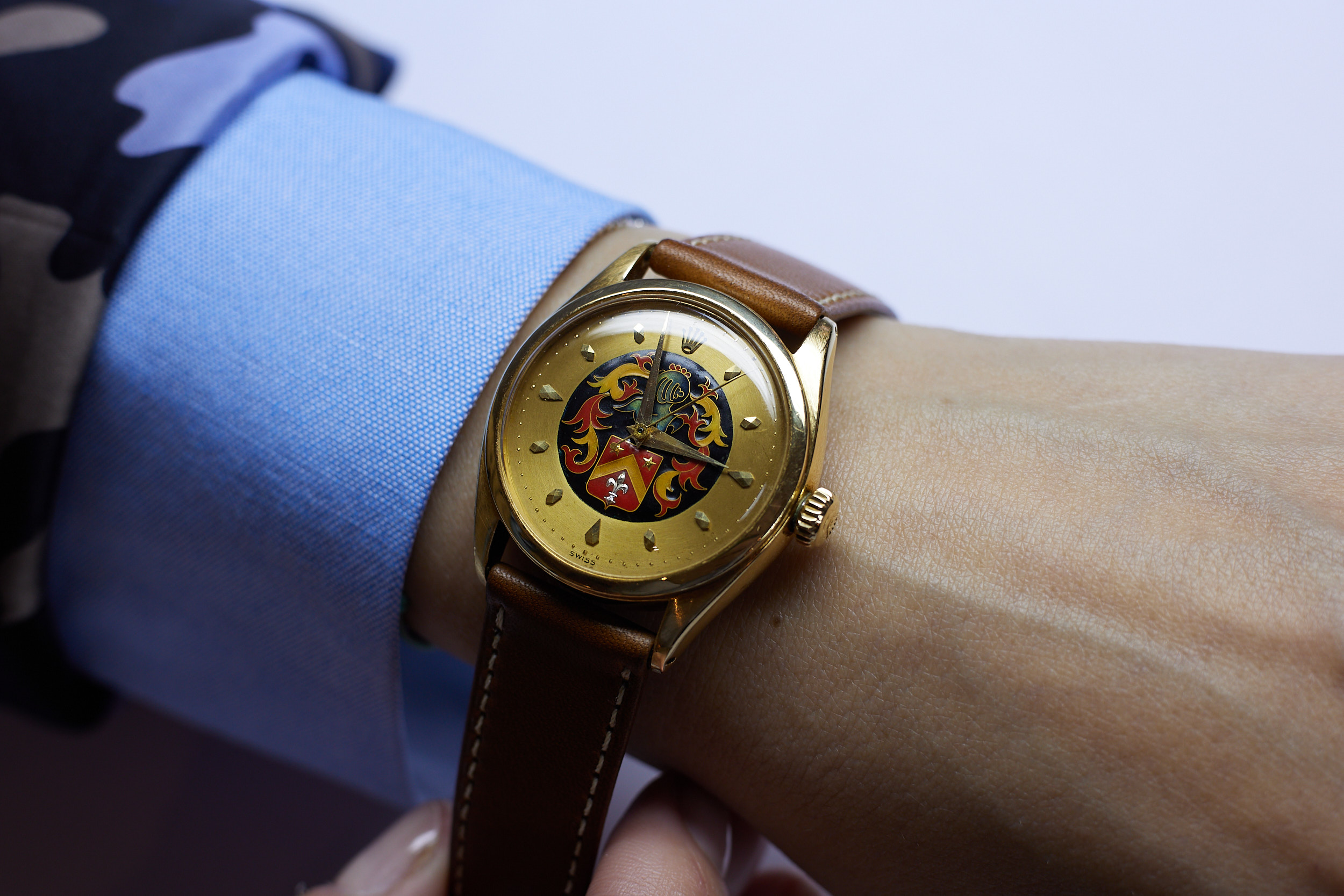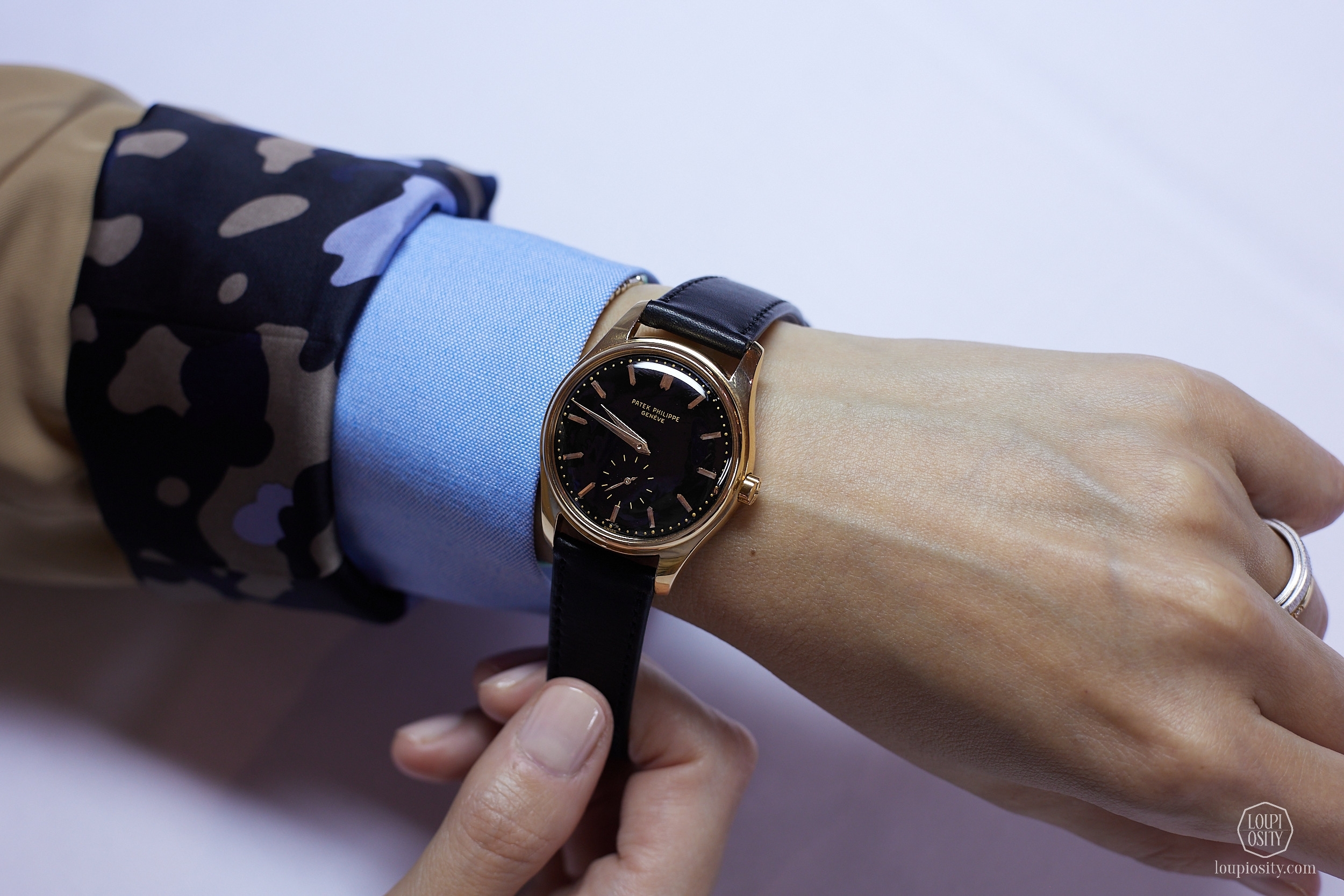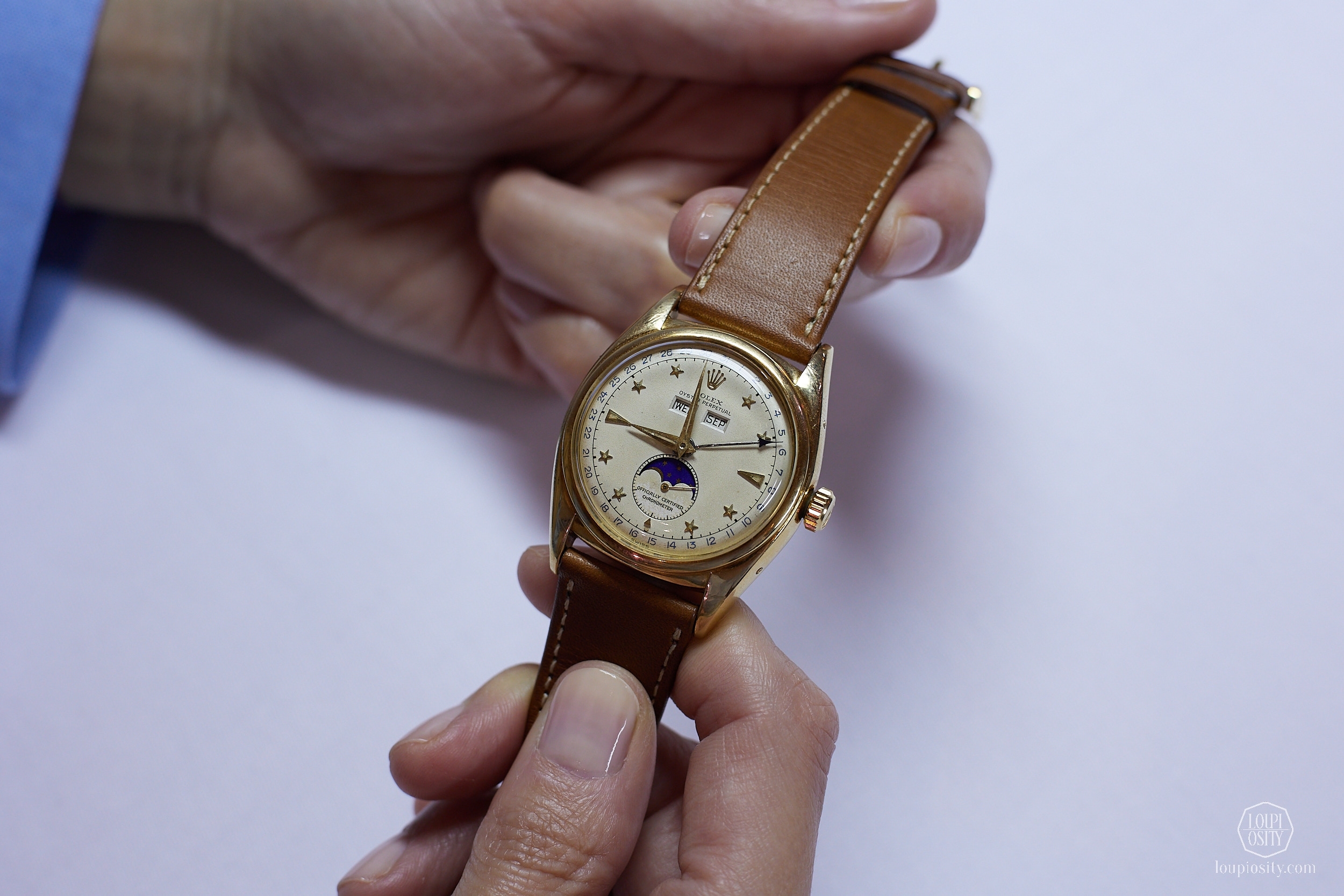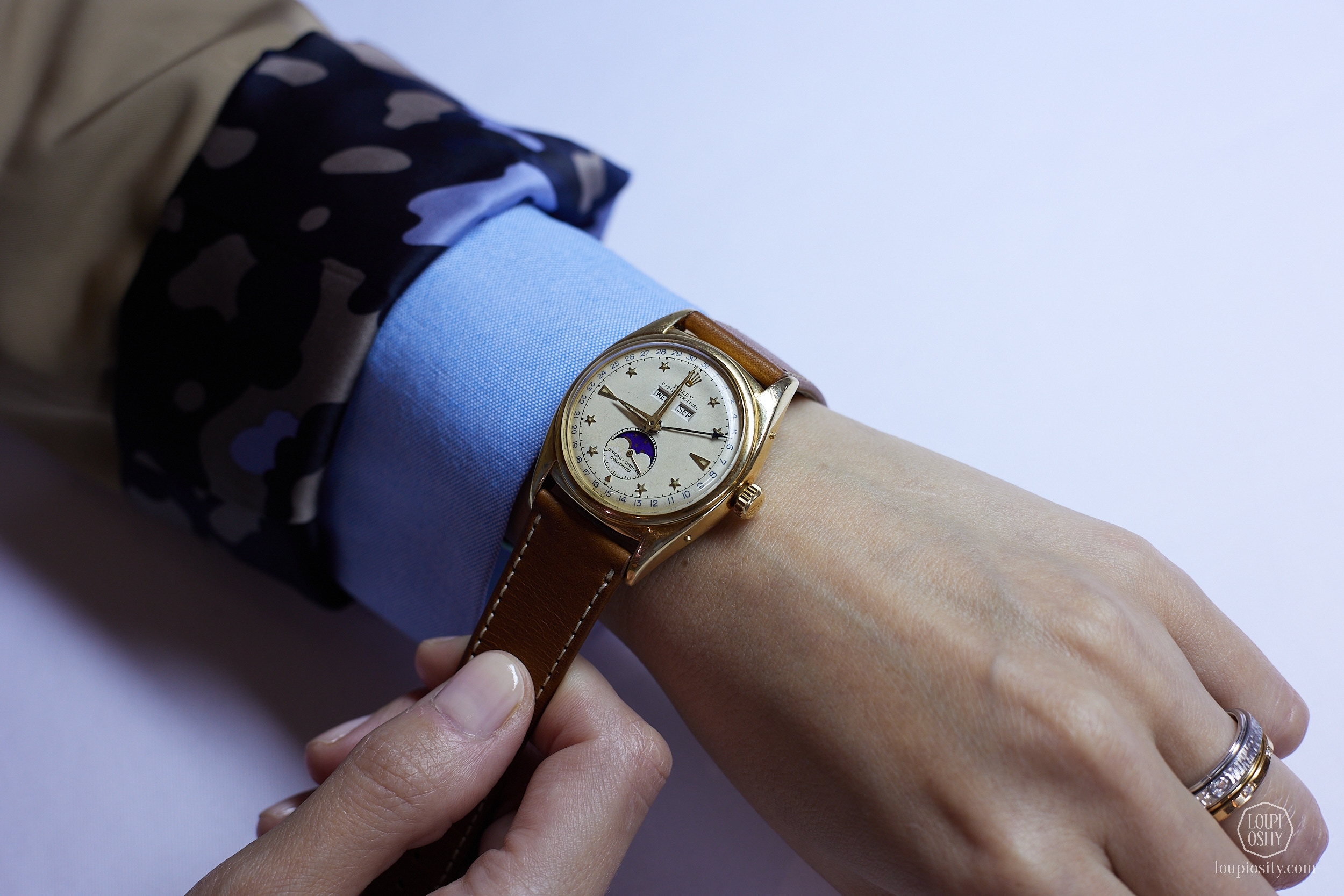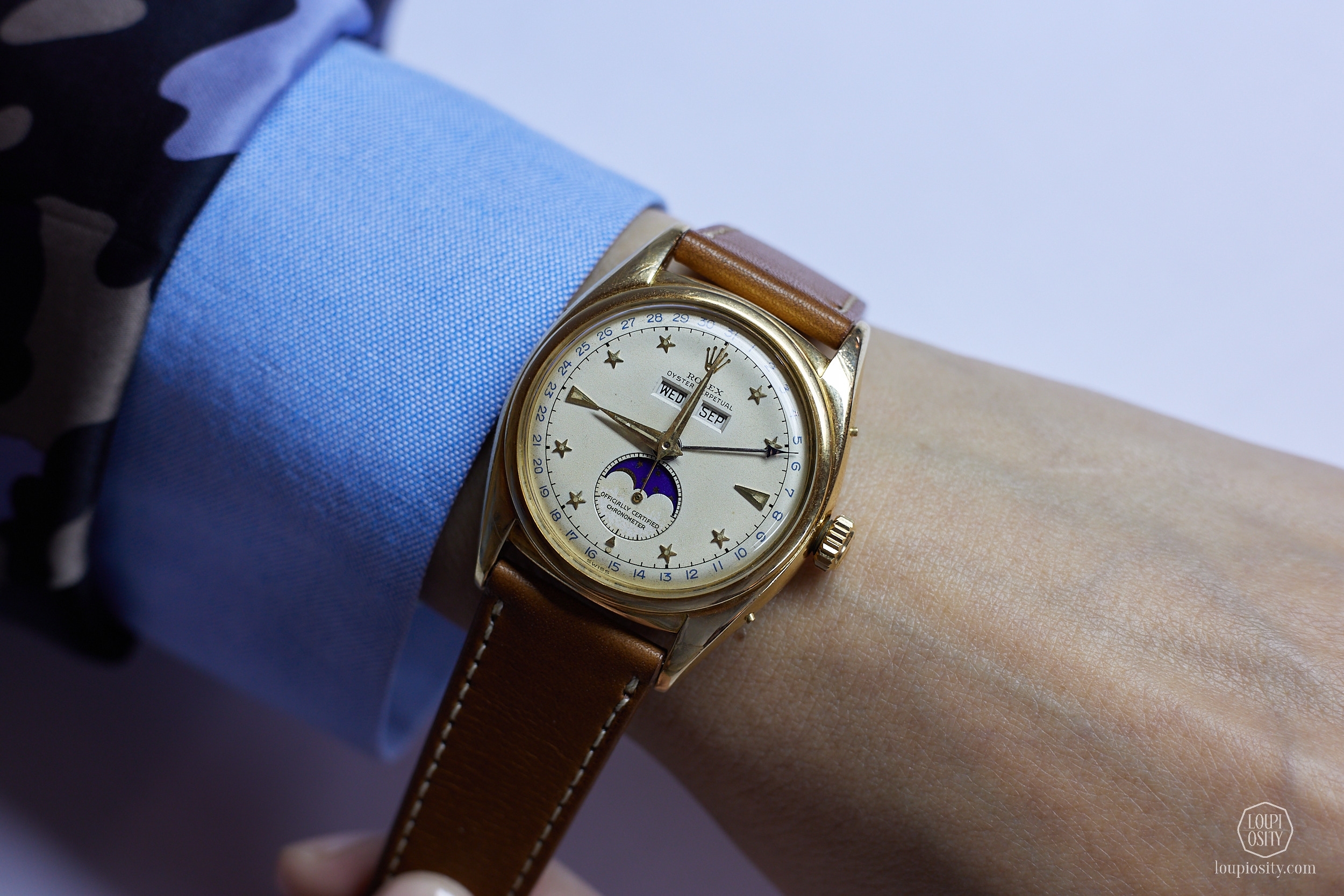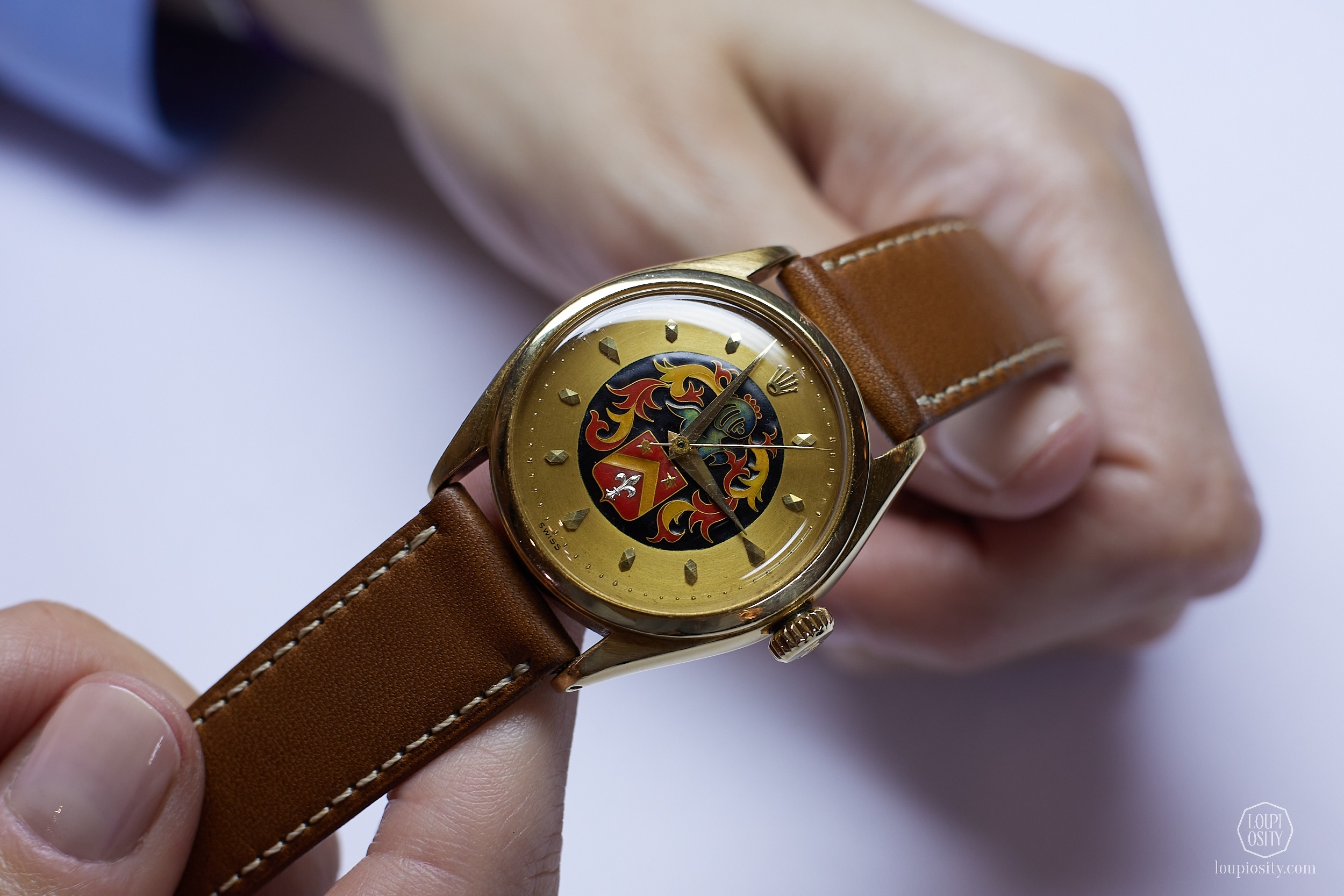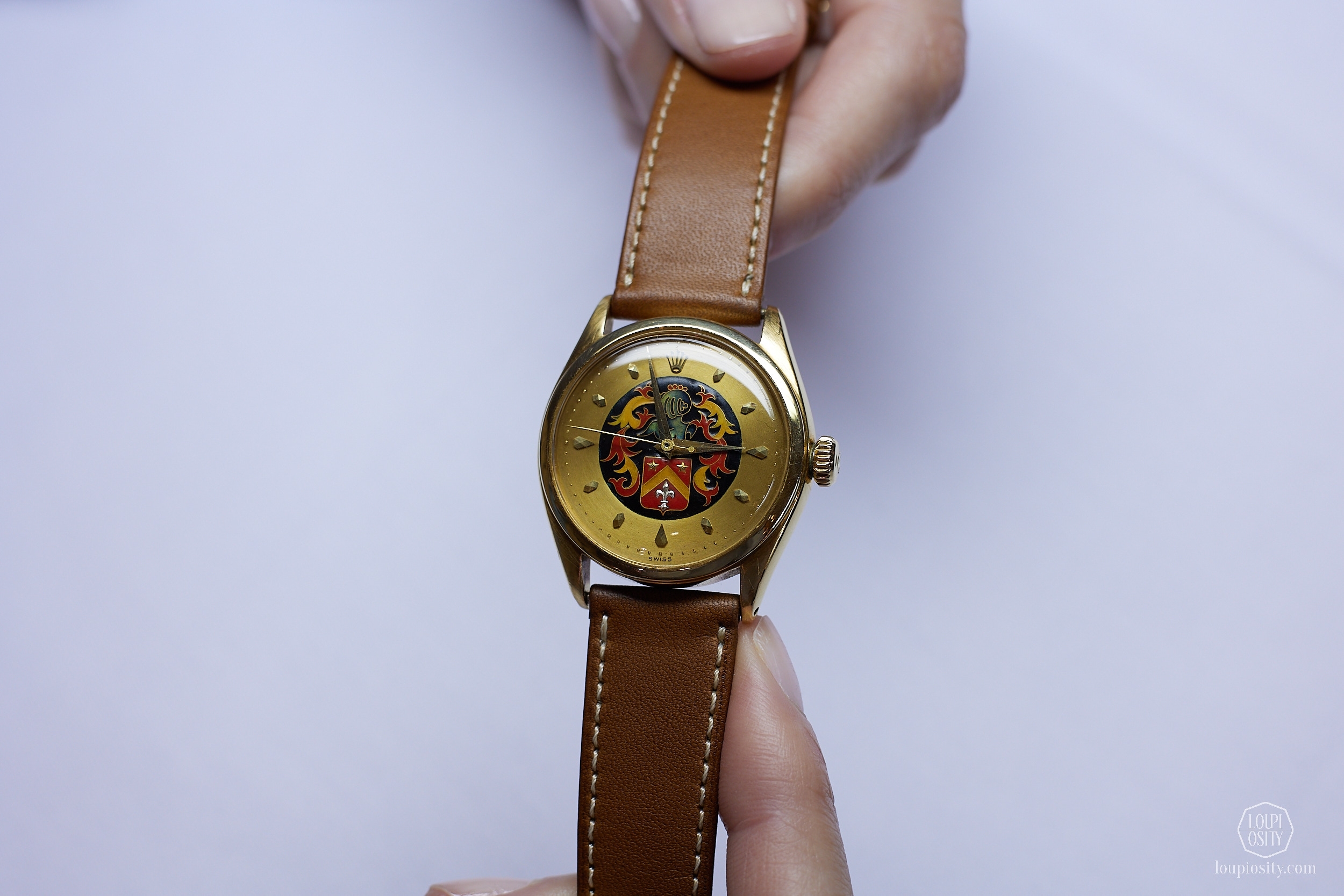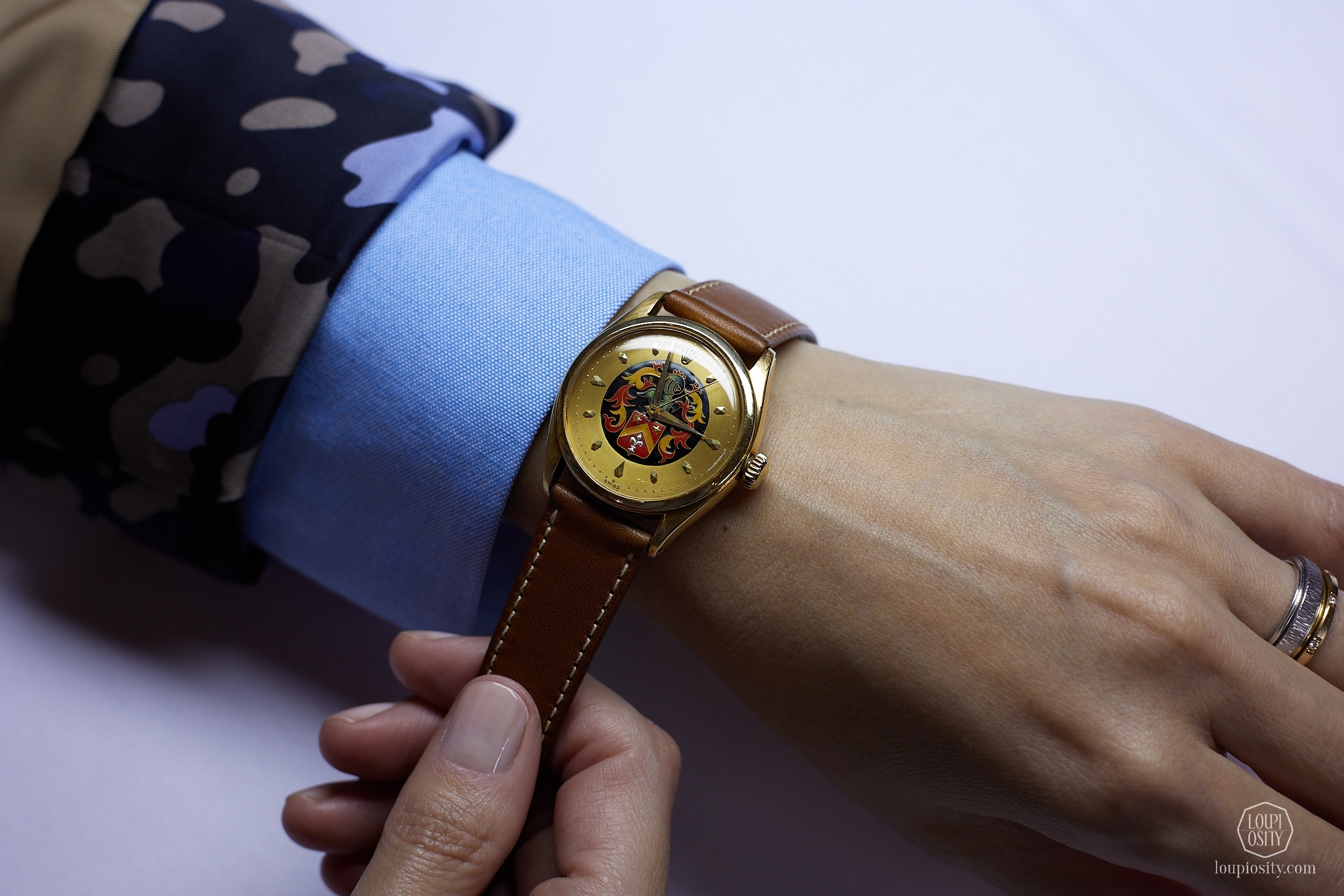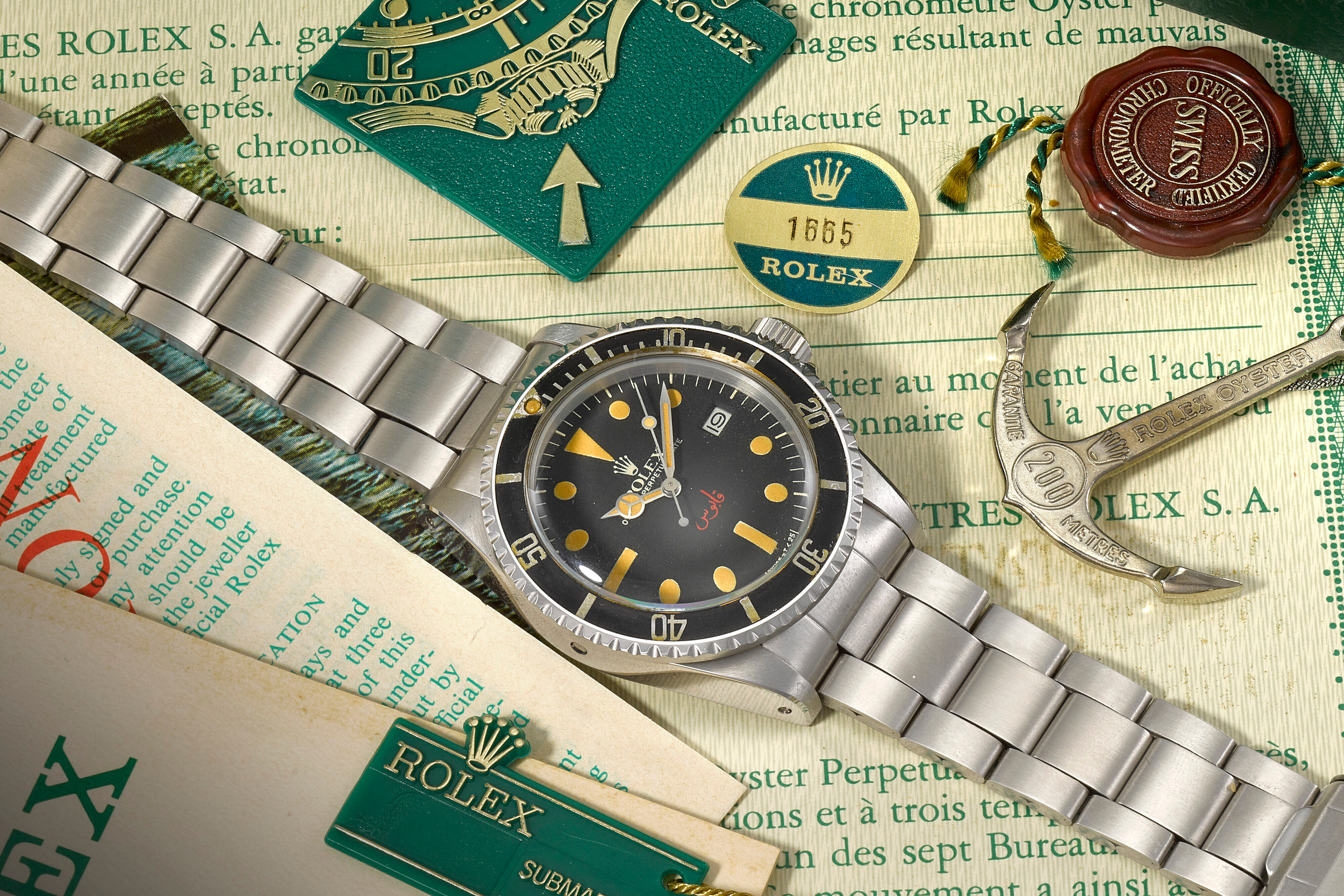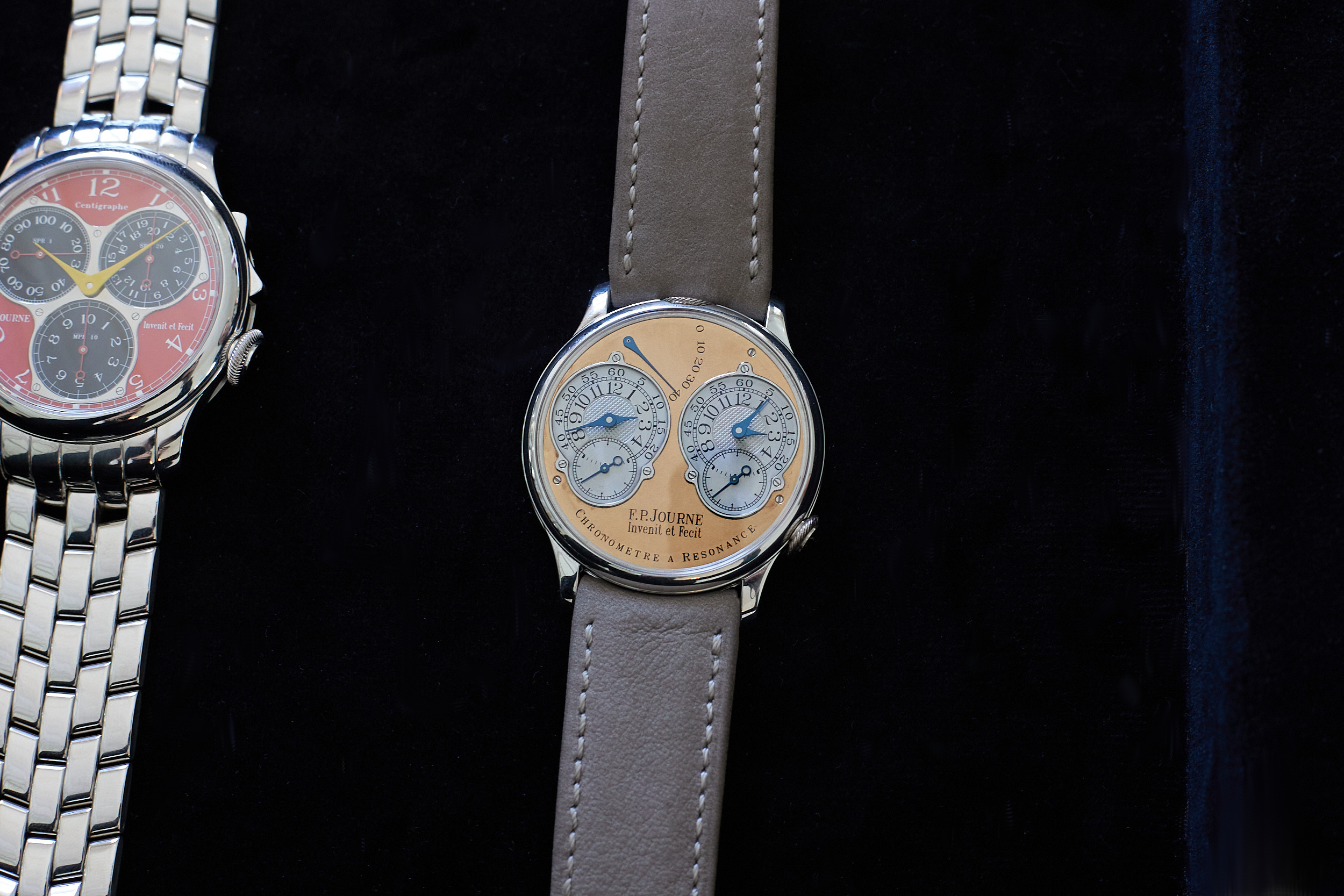Christie’s Rare Watches auction will take place live on 14 May (updated date) at the Four Seasons Hotel des Bergues in Geneva. The sale includes the ‘Property of Michael Schumacher’ section, highlights from Patek Philippe or Rolex, and niche brands’ pieces like Czapek or De Bethune.
UPDATE – 14 May: The Rare Watches live auction achieved CHF 22,821,050. The auction was 96% sold by lot, and the top lot of the sale was a Patek Philippe, ref. 1518 from 1948 which made CHF 2,465,000, setting the highest price for a wristwatch sold this spring in Geneva.
Lot 124 – Patek Philippe reference 2526, sold for CHF 680,400
Lot 54 – Rolex reference 6062, sold for
Lot 112 – Rolex Reference 6100 sold for CHF 277,200
Following an extensive security issue last week, Christie’s has postponed its Geneva Rare Watches sale. The cyber incidents caused the company to take its main website offline. The new auction date is currently 14 May, 2pm, CET. Guillaume Cerutti, Chief Executive Officer at Christie’s shared an update on LinkedIn – ‘We are managing this incident according to well-established practices, supported by experts in the field. We have made proactive decisions -including taking our main website offline. I am pleased to confirm that all our live auctions this coming week will take place as scheduled with the exception of the Rare Watches sale in Geneva that is postponed for just one day to Tuesday 14th May.
Rare Watches – a few highlights
Lot 124 – Patek Philippe reference 2526, estimate CHF 350,000 – CHF 700,000
The Reference 2526 was first introduced at the Basel Fair in 1953 with the calibre 12-600 AT and it is widely considered as Patek Philippe’s first self-winding watch. It was in production until 1960, in four different series.
The understated elegance of the timepiece was further enhanced by a kiln-fired hard enamel dial – very difficult to make it beautifully but when done properly, it can last almost indefinitely. As Christie’s research states, ‘the present watch is fitted with a black enamel first series dial, easily distinguished by glimpsing the flared holes under the numerals.’ (On the second series’ dials the numerals are glued to the enamel.)
The lot in 35 mm pink gold case, combined with this black enamel dial and applied gold indexes is know to be only one of eight examples to have appeared in public to date. Extract from the Archives confirming production of the lot in 1957 and its subsequent sale on 14 May 1958. It has the characteristic double P crown.
Earlier this spring Sotheby’s sold a Reference 2526, which was the first 2526 ever made in 1952 and sold to the Texas-born lawyer and watch collector, Joe Ben Champion Jr, known as J.B. Champion.
Lot 54 – Rolex reference 6062, named Stelline, estimate CHF 350,000 – CHF 700,000
This yellow gold reference 6062 ‘Stelline’ Rolex was previously owned by Gordon Bethune (1941, Texas), a retired US airline executive and also a world-renowned watch collector. He served as the Chief Executive Officer of Continental Airlines from 1994 and a Chairman and Chief Executive Officer from 1996 until December 30, 2004.
The highlight lot is a 35.5 mm 18k gold piece with a triple calendar and moon phase indication with luminous star-shaped hour markers, hence the name, and fitted with an in-house automatic movement.
The Reference 6062 and 8171 are among the most complicated Rolex watches and are highly coveted among connoisseurs. Both share the triple date functions (month, day and moonphase) organized in a similar layout: month and day display in two neighbouring rectangular apertures and the date indicated by a hand on the periphery of the dial. The 8171 was equipped with Automatic, cal. 10 1/2”, while the 6062 Automatic, featured cal. 9 3/4”. The 8171 was slightly bigger in diameter (38mm as opposed to the 36mm of the 6062).
There is a distinct buzz for these models and every now and then remarkable examples emerge at auctions. There are a few from the recent years’ auctions we covered here, here or here.
Lot 112 – Rolex Reference 6100 – ‘Les Armoiries’ , estimate CHF 220,000 – CHF 440,000
Cloisonné enamel dials are amazing artisan achievement (see more about the technique here), but it is a rather niche for watch collectors. Although the most exceptional pieces can achieve high prices at auctions.
At Rolex, enamel dials are often found in reference 6100, 6101, 6102 or 6290, for example. The Lot 112 is a 33.5 mm, yellow gold wristwatch, currently the only known reference 6100 with ‘Les Armoiries’ (‘The Arms’ as in ‘coat of arms’) cloisonné dial. It was sold in the US at Christie’s in 2015, for USD 317 000 and now it is back to the market.
The cloisonné enamel dial was made by Marguerite Koch, a famous artist from Geneva who at the time was also designing and creating dials for Patek Philippe, Vacheron Constantin and Stern Frères. As Christie’s describes, the ‘original watercolour design for present dial has been identified in the work books of the dial makers Stern Frères as no. 3679 and confirms that it was made by Marguerite Koch.’
Enamel dials from the 1950s are very vivid and characteristic, thanks to the materials such as lead, mercury and cyanide. These toxic chemicals can no longer be used of course, but the pieces created in this era are still sought-after.
Photo credits: Loupiosity.com
All registered trademarks are property of their respective owners.
All rights reserved.
